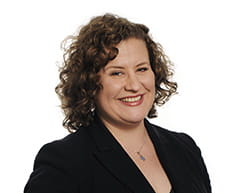We reported on the changes to the Coronavirus Job Retention Scheme (CJRS) in last month's edition of hrlaw@trowers.
Since then further guidance has been published on how flexible furlough will work, as well as an amended Treasury Direction on the CJRS. The amended Direction sets out in detail how amounts that can be claimed under the CJRS in respect of an employee who works part-time on flexible furlough should be calculated.
From 1 July an employer will only be able to participate in the CJRS if it has made a claim under the original scheme by 31 July, in respect of an employee who has been furloughed for a minimum of 3 weeks beginning on or before 10 June. In addition, from 1 July, claim periods will no longer be able to overlap months, so employers who previously submitted claims with periods that overlapped calendar months will no longer be able to do this.
From 1 July part-time working (flexible furlough) is allowed under the scheme. Employers will be able to bring back to work any employees who have previously been furloughed for any amount of time and any shift pattern. While the employer will still be able to claim under the CJRS for those employees' normal hours not worked, it will have to pay in full for any hours worked and will be responsible for the tax and NI contributions on those payments.
When claiming the CJRS grant for furloughed hours employers will need to report and claim for a minimum period of a week. Those making claims for longer periods such as those on monthly or two weekly cycles will be able to do so. In order to be eligible for the grant, employers will have to agree with their employees any new flexible furloughing arrangement and confirm that agreement in writing (which may be in electronic form). The written confirmation of the agreement (or the agreement itself) must be retained by the employer until at least 30 June 2025.
Those returning from maternity, adoption, paternity, shared parental or parental bereavement leave after 10 June and who started that leave before 10 June will still be eligible for the furlough scheme even if they had not been previously furloughed. This is subject to the proviso that the employer has previously submitted a successful claim for any other employee for a 3 week period of furlough between 1 March and 30 June, and that the individual returning from parental leave was on the employer's PAYE payroll on or before 19 March 2020.
Military reservists returning from work following a period of mobilisation after the cut off date of 1o June will also be eligible to be furloughed, subject to the same conditions as those returning from parental leave.
The level of the CJRS grant will be gradually tapered, reflecting the fact that more and more people will be returning to work.
From August employers will have to pay NI and pension contributions. In September they will have to pay 10% of wages (the government will contribute 70% up to a cap of £2,187.50) for the hours the employee does not work and this will rise to 20% in October (with the government contributing 60% up to a cap of £1,875). The CJRS ends on 31 October.
In the meantime it's worth noting that the government has published some guidance entitled, 'Pay Coronavirus Job Retention Scheme grants back', which details how employers can rectify any over-payments they have received under the scheme. In addition, employers have only until 31 July to check and make any claims for under-payments from the CJRS for furloughed staff. Statistics indicate many employers haven't claimed all they are entitled to. For example, the Treasury has confirmed that around 40% of employers have not made a claim for employer NICs costs or employer pension contributions. If you need any help working out whether you may have been short-changed, please do get in touch.
For more information on the changes to the scheme please refer to our recent bulletin: 'Exploring flexible furlough'.

